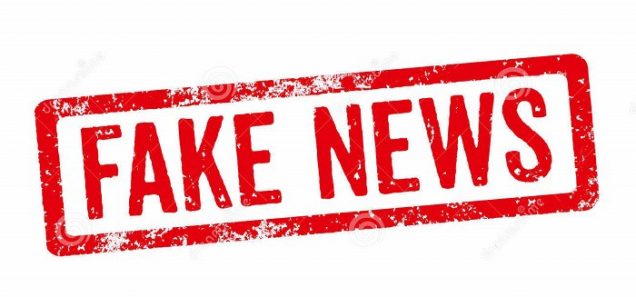With the development of social media, the control of information posting on the social media platform does not catch up the speed of the increasing of fake news. The result of election of 2016 caught a lot of attention about the fake news in social media. At that time not only public, but also Donald Trump himself believed that Facebook and Twitter “helped him win”(Groshek & Koc-Michalska, 2017) This historical events call into a question about the actual relationship between fake news, social media and the result of politics. Does those fake news on social media platform influence the result of politics? And why this kind of relationship exists?


Fake news does not only include those news include unreal contents, but also includes those news based on fabricated articles and might conceal the truth. In addition, Chadwick finds that many news articles online, which are totally made up, are copied and pasted from some mainstream online new sites. (Chadwick, 2017)With the high influence of those mainstream new sites and the fast spread of those news articles, audience might believe that all those information within the news articles are all the truth, no one will consider that they are all made up or include fake information in it. Fake news are always appear and process like this. Online fake news have a special characteristic that they are designed to be unreal to mislead the public.(Brummette & Messner, 2018) Defining by Tandoc et al., fake news intent to catch public’s attention. He also indicates that “fake news is typically characterized by fabrication since they are consisted of fictitious material, the manipulation and misrepresentation of visual images to create distorted public perceptions, as well as propaganda employed by political entities to sway public opinion” (Brummette & Messner, 2018) From those opinion of previous opinion about fake news, we can clearly find that fake news are made to lead the attention of the public, and they are designed to obscure public’s perception of a political leader, events or policy.

Why fake news appear the most frequently on social media platforms? For few reasons, firstly social media platform, such Facebook and Twitter, do not have the third party technologies to filter the information that users post online. As a result, everyone can see the original post and news that release to the social media platform. Most of social media platforms are lack of control of fact-checking or editorial-judgment. (Allcott & Gentzkow, 2017) Moreover, the cost of posting news on those social media platform is really low. Like those traditional media format, such as television, radio and newspaper, the creators of news need to pay and waiting for reviewing of relevant departments and then finally release to the public. Different from those traditional media, users of online social media only need to move their fingers, creating a account, writing down the post, and click “post”, and then public can see the news post. There is no extra cost, and the whole process is easy and no need to wait. Furthermore, with the development of modern technologies, people heavily rely on those high mobile technologies, such as smartphones and computers. It is easy for nearly all people with internet to access to those social media platform, even news online is more common than newspaper itself.
Guess indicates that Facebook is one of the social media that can be seen as a facilitator of the spread of fake news, by showing us the important of fact-checking, which never reached facebook’s users. (Guess et al, 2018) Chadwick also should us that during 2016, about 67 percent of American public receive news about Trump and Clinton ‘s election from Facebook. In addition, just as what have been mentioned by Chadwick in his book, fake news is one of the dysfunctional hybridity, that shows that interdependence among older and newer media logics may contribute to the erosion of democratic norms. And the fake news depends on the combination of media affordances and systems trends.(Chadwick, 2017) This can be supported by Guess that he finds that those pro-Trump fake news are viewed frequently by those Trump supporters. And people who supported Trump more likely visit those fake news websites than Clinton’s supporters. (Guess et al, 2018)
From what I have mentioned above, the features of online fake news make social media the best platform to spread, such as lower cost, no filter, no fact-checking. Moreover, Chadwick also provides information that mobile internet altered how we read and recognize the news, changing news cycle to political information cycles. This whole process is realized by sharing information on social media platforms by those bloggers, account users, politicians and activists. (Chadwick, 2017) Not only because of the characteristics of fake news , but also because of the method of how audience treat those news online let fake news influence public political perception. We can clearly find that social media as a mediation of fake news and fake news will affect public’s political opinion. To restrain the negative phenomenon in the future, it better to improve supervision of social media platforms and also educate the public to stand their own side, and do not influence by others easily.
Reference
Chadwick, A. (2017). The hybrid media system: Politics and power. New York: Oxford university press.
Groshek, J., & Koc-Michalska, K. (2017). Helping populism win? Social media use, filter bubbles, and support for populist presidential candidates in the 2016 US election campaign. Information, Communication & Society,20(9), 1389-1407. doi:10.1080/1369118x.2017.1329334
Guess, Andrew, Brendan Nyhan and Jason Reifler. (2018). “Selective Exposure to Misinformation: Evidence from the Consumption of Fake News During the 2016 US Presidential Campaign.”
Brummette, J., DiStaso, M., Vafeiadis, M., & Messner, M. (2018). Read All About It: The Politicization of “Fake News” on Twitter. Journalism & Mass Communication Quarterly, 95(2), 497–517. https://doi.org/10.1177/1077699018769906
Allcott, H., & Gentzkow, M. (2017). Social Media and Fake News in the 2016 Election. The Journal of Economic Perspectives,31(2), 211-235. Retrieved from http://www.jstor.org/stable/44235006